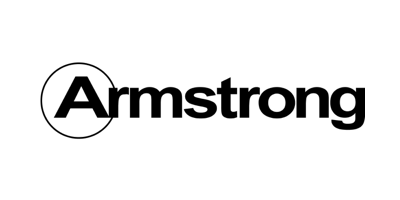Armstrong World used raw asbestos in its products, which included floor and ceiling boards and cabinets. The company is also known for its asbestos-containing insulation and cement. The company’s most popular product, vinyl asbestos tile, was found in homes across the United States. In 2000, the company filed for bankruptcy protection after scores of workers, from those who worked in Armstrong plants to contractors who installed Armstrong tiles in homes, came forward with asbestos-related injuries.
High Risk Occupations
Those who worked in or near Armstrong World factories were at risk for asbestos exposure, especially those who handled raw asbestos fibers. Those risks extend out to contractors who installed the products and home and business owners who handled the product. The trust has identified nearly 2,000 occupations that are at risk for exposure to Armstrong World asbestos products. Some at-risk occupations include the following:
Plant Worker
Anyone who worked in or near an Armstrong World plant is at risk, including officer employees and janitorial staff.
Floor Tile and Linoleum Layer
This includes anyone involved with cutting and sizing asbestos flooring. Asbestos was used in floor tiles for its tensile strength.
Insulation installers
The company’s asbestos-insulation spray, Limpet and Armaspray, were made from nearly 100 percent asbestos. Some of the insulation sprays were known to create toxic dust clouds.
Cement Mason
The company’s cement products contained high amounts of asbestos to ensure the strength of the product. When dry cement is mixed with liquid it releases a cloud of toxic dust.
How was the Armstrong World Trust formed?
As far back as the early 1930’s, Armstrong knew about the dangers of asbestos, but company executives did not feel it was their responsibility to help the employees. When the courts ruled Armstrong knowingly ignored the safety of its workers and consumers by using asbestos, the company was slammed with thousands of lawsuits and paid millions in compensation.
Exposed to Asbestos
See if you qualify for compensation from the Armstrong World Industries (AWI) Asbestos Trust today.
Get Help NowArmstrong World filed for Chapter 11 bankruptcy reorganization in 2000. As part of the reorganization, the company created its trust to settle all current and future claims. In the first two years, the trust settled more than 200,000 claims. When the trust was established, it only paid 20 percent. That is, $20 per $100 requested. In July 2019, the trust payment percentage was set at 26% percent, but in Oct 2019 the payment percentage was reduced to 19.7%. The scheduled value of a mesothelioma diagnosis is $110,000 with a maximum value of $400,000.
Armstrong World Industries Asbestos Exposure
From 1932 through 1982, Armstrong World manufactured various types of floor tiles containing chrysotile asbestos. From 1954 through 1983, many of the company’s vinyl floor coverings were manufactured with asbestos-containing backing material called Hydrocord. From the early 1950s to the late 1980s, the company manufactured and sold asbestos-containing gaskets for internal combustion engines.
At one point the company had scores of manufacturing plants in states that included California, Massachusetts and New York. When the Occupational Safety and Health Administration (OSHA) asked Armstrong to put a safety warning on its products due to asbestos, the company would not admit asbestos caused cancer. Instead, Armstrong only warned professional flooring installers against breathing in dust. More than 15,000 employees worked at Armstrong World manufacturing plants in the early years and tens of thousands more people used the company’s products. Overall the company created asbestos-containing products until 1987.
Armstrong Asbestos Products
Started in 1860, Armstrong World Industries developed its name first as a wine bottle cork supplier and later expanded its product line into corkboard, fiberboard and other products. The expansion into linoleum and vinyl flooring meant adding asbestos to products. The dangerous mineral was used because its tensile strength and chemical and fire resistance.
The company utilized also used asbestos in its insulation products. Some included spray-on insulation, such as Limpet and Armaspray, which were made almost wholly of asbestos. Workers who experimented with these sprays reported asbestos dust clouds forming during the testing. While some of these insulation products made it to the market, they were often discontinued for a variety of reasons.
Armstrong World Industry used the following products that contained asbestos:
Vinyl and linoleum flooring
From the early 1930s through 1986, Armstrong flooring contained asbestos. Darker floor tiles are known to contain up to 70 percent asbestos. Also, most Armstrong floorings have backings that are made with asbestos. In some cases, airborne asbestos levels are high in areas subjected to high traffic (such as offices or schools) or harsh cleaners. The most common type of asbestos-containing Armstrong tile is Excelon.
Limpet
Armstrong’s limpet spray insulation, which was commonly known as flock insulation, was used from 1960 to 1973 and was made from100 percent asbestos. It was used for fire protection, noise reduction, thermal insulation and condensation control. Workers who used this product were typically covered in asbestos fibers from the limpet.
Hydrocord Flooring Felt
Commonly known as floor backing, Hydrocord was used as insulation and cushioning under new flooring. Armstrong’s flooring products contained high amounts of asbestos and are particularly dangers when being installed and removed. Hydrocord is similar in texture and appearance to compressed cardboard.
Armaflex insulation
Used as a standard fire, heat and acoustic insulation, Armstrong’s insulation boards, sheets and pipe coverings contained between 25 and 40 percent asbestos fiber. Adhesives and plasters used to install insulation also contained asbestos.
Other related products include the following:
- Accobest Gasketing Material
- Accobest Gasketing Material
- Accopac Asbestos Paper
- Acoustic Cement
- Accobest Gasketing Material
- Asbestos Felt
Asbestos Litigation Against AWI
Armstrong World Industries, like many of its asbestos-manufacturing counterparts, was among early litigation for asbestos-related injuries.
Borel v. Fibreboard Paper Products Corporation et al.
Although not the primary named plaintiff, Armstrong World Industries was a defendant in this precedent-setting case from the 1970s. The courts sided in Clarence Borel’s favor posthumously, citing that “failure to give adequate warnings” about the safety of asbestos-containing products rendered the product “unreasonably dangerous”.
Additionally, this case established that “a duty to warn attaches, whenever a reasonable man would want to be informed of the risk in order to decide whether to expose himself to it.” This is cited as one of the foundational cases that established that those who were affected by asbestos-containing products were entitled to compensation based on unexplained and unwarned exposure risks.
Other prominent manufacturers in this case include Johns Manville (who placed warning labels in 1964) and Ruberoid Co. (who placed warning labels in 1966, later becoming G-I Holdings).
Miller v. Armstrong World Industries
Another case that established precedent in the asbestos litigation space, this 1991 ruling created precedent for filing legal claims and statutes of limitations for those who have multiple asbestos-related diseases.
Though originally denied, this ruling was overturned on appeal in favor of the plaintiff, stating that Miller would not be held to the original two-year statute of limitations established for his first diagnosis of pleural thickening. Armstrong World Industries was found liable for claims in his second disease diagnosis of asbestosis, because this diagnosis occurred later and was therefore within its own two-year statute of limitations period.
In cases against Armstrong today, there are statutes of limitations based on the Trust Distribution Procedures (TDP) based on the date of diagnosis and date of the claim filed against Armstrong.
Armstrong World Settlements
Trust fund claimants who want payments quicker usually opt for cash payments because they are easier for the trustees to process. Claimants who opt for an individualized review typically receive bigger mesothelioma lawsuit settlements but they take more time because trustees must review all connected documentation to determine the allowable amounts.
Most asbestos trust fund victims make claims from more than one trust fund because exposure comes from a variety of manufacturers. The following is a schedule for Armstrong’s discounted cash payments:
| Disease | Compensation |
|---|---|
| Mesothelioma | $110,000 |
| Lung Cancer | $42,500 |
| Other Cancer | $21,500 |
| Severe Asbestosis | $30,000 |
| Asbestosis | Up to $9,700 |
In 1970, an asbestos-related lawsuit against Armstrong found it was the manufacturer’s responsibility to warn of potential dangers. This precedent-setting case became the basis for all future asbestos lawsuits.
Find Out if you Qualify
Fill out our quick form and see if you qualify for trust fund compensation
Check NowSources
- Castleman, Barry I. “Asbestos: Medical and Legal Aspects”. Retrieved from http://books.google.com/books?id=dmBWIkIu_IwC&pg=PA544&lpg=PA544&dq=armstrong+asbestos+products
- Dixon, Lloyd. “Asbestos Bankruptcy Trusts: An Overview of Trust Structure and Activity with Detailed Reports on the Largest
Trusts”. Retrieved from http://www.rand.org/pubs/technical_reports/TR872.html - Armstrong World Industries Asbestos Trust. Resources. Retrieved from http://www.armstrongworldasbestostrust.com/resources/
- Rand Institute for Civil Justice. Asbestos Bankruptcy Trusts. Retrieved from http://www.rand.org/content/dam/rand/pubs/technical_reports/2010/RAND_TR872.pdf
- Scheduled Values for AWI Asbestos Trust. Retrieved from https://www.armstrongworldasbestostrust.com/file-a-claim/ir/ir-settlement/


